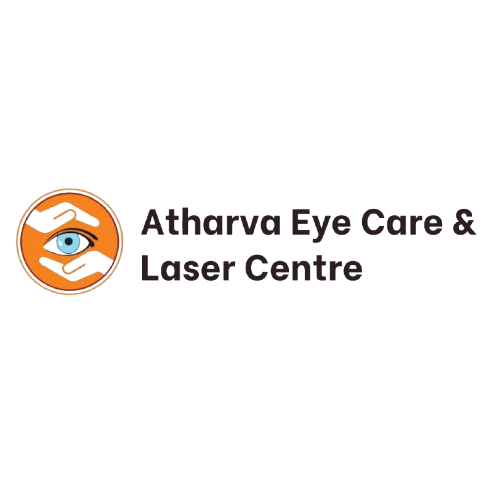- March 31, 2025
- By: atharvaeyeclinic.com
- No Comments
What Causes Dry Eyes? Common Triggers and Symptoms
Common but sometimes ignored eye condition dry eyes can have a great impact on your day-by-day living. Dry eyes are uncomfortable and can impair daily activities such reading, computer use, or driving whether it is the constant burning sensation, hazy vision, or the need to blink often. Effective treatment begins with knowledge of the causes and signs of dry eyes, we believe at Atharva Eye Clinic.
What Are Dry Eyes?
Dry eye is a condition that affects your tear film, the three layers of tears that cover and protect the surface of your eyes. Clear and comfortable sight depends on a consistent and even tear film. Problems with your tears can lead to unpleasant symptoms including blurred vision, watering, stinging, or scratching.
Your tears may dry up if they are not working properly; several different things can cause this. For the reason above, health care professionals view dry eye as a multifactorial condition. Many different complex sources and risk elements exist. It could therefore be some time before one identifies the source of the symptoms and solves your problem. Establishing treatment with Atharva eye clinic for managing your dry eye.
Types of dry eye disease
You might believe from its name alone that dry eye disease simply means your eyes do not manufacture enough tears. This is in fact only half of the story. Dry eye disease has several different forms.
- Aqueous deficient dry eye: is a condition where your eyes fail to create enough tears. Located in the outer, upper corner of every eye, your lacrimal gland creates your aqueous tears. These tears constitute the middle, aqueous part of your tear film. Some autoimmune diseases can produce eye inflammation in the lacrimal gland and stop it from making a sufficient number of aqueous tears
- Transient dry ocular eye: is when your tears evaporate too fast. Most usually from meibomian gland malfunction. This indicates that your eyelids glands, which generate the outside, greasy layer of your tear film, do not function normally. The oil layer is therefore unsteady and lack ability to guard the watery layer against dehydration.
- Mixed dry eye: Poor tear inconsistency and aqueous tear deficit affect some individuals. Your tears are unstable and your vision does not create enough of them. Both of these issues cause dry eye signs.
Common Causes of Dry Eyes
Several factors can lead to dry eyes, and understanding these causes can help in managing the condition better. Here are some of the most common reasons people suffer from dry eyes:
- Aging
As we age, tear production naturally decreases. Dry eyes are especially common in people over 50 years old. Hormonal changes, particularly during menopause, can also reduce tear production in women.
- Environmental Conditions
Exposure to wind, smoke, and dry air (such as from air conditioning or heaters) can increase tear evaporation, leaving your eyes dry and irritated.
- Prolonged Screen Time
Spending long hours in front of computers, smartphones, or TVs reduces the frequency of blinking. Blinking is essential to spread tears evenly over the eyes, and reduced blinking can lead to dryness.
- Contact Lens Use
Wearing contact lenses for extended periods can disrupt the tear film and contribute to dryness and irritation.
- Certain Medications
Some medications can reduce tear production. These include antihistamines, decongestants, antidepressants, blood pressure medicines, and hormone replacement therapies.
- Medical Conditions
Autoimmune diseases like Sjogren’s syndrome, rheumatoid arthritis, lupus, thyroid disorders, and diabetes are commonly associated with dry eyes.
- Eye Surgeries
Refractive eye surgeries such as LASIK can temporarily affect tear production and lead to dry eyes during the healing process.
Common Symptoms of Dry Eyes
Recognizing the symptoms of dry eyes is crucial for early diagnosis and treatment. If you experience any of the following signs, it’s essential to consult an eye specialist:
- A stinging, burning, or scratchy sensation in the eyes
- Redness and irritation
- Sensitivity to light (photophobia)
- Blurred or fluctuating vision
- Feeling like something is in your eyes (foreign body sensation)
- Difficulty wearing contact lenses
- Watery eyes (a reflex to dryness)
- Eye fatigue, especially after reading or screen use
How Atharva Eye Clinic Can Help
At Atharva Eye Clinic, we offer advanced diagnostic tools to evaluate the root cause of dry eyes and customize treatments based on individual needs. Our treatment options include:
- Artificial tears and lubricating eye drop
- Prescription medications: to reduce inflammation and improve tear production
- Punctal plugs to prevent tear drainage and retain moisture
- Lifestyle and environmental modifications to reduce triggers
- Nutritional counseling for supplements like omega-3 fatty acids, which promote healthy tear production
Tips to Prevent and Manage Dry Eyes
Here are a few tips to keep your eyes comfortable:
- Take regular breaks from screens (follow the 20-20-20 rule: look 20 feet away every 20 minutes for 20 seconds)
- Use a humidifier to add moisture to dry indoor air
- Wear sunglasses outdoors to protect from wind and sun
- Stay hydrated and maintain a balanced diet
- Avoid smoke and direct exposure to air vents
Conclusion
Dry eyes are more than just an annoyance — they can seriously impact your eye health and daily life. If you are struggling with dry eye symptoms, don’t hesitate to seek expert help. Atharva Eye Clinic is here to diagnose the cause and offer personalized treatments to restore your eye comfort and health.
Book your appointment today at Atharva Eye Clinic and get relief from Dry Eyes.

